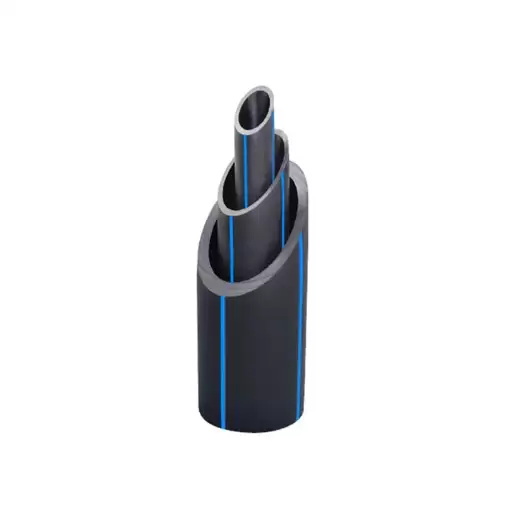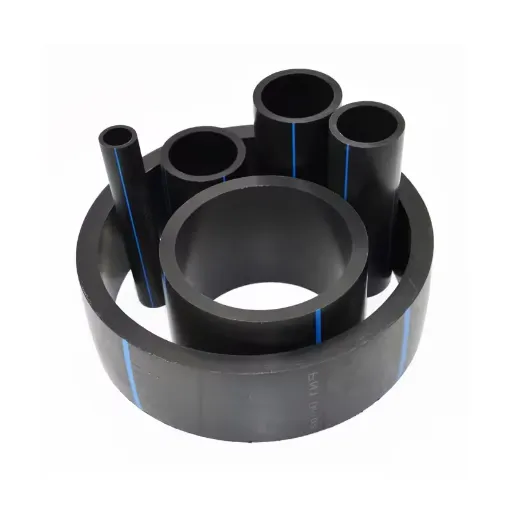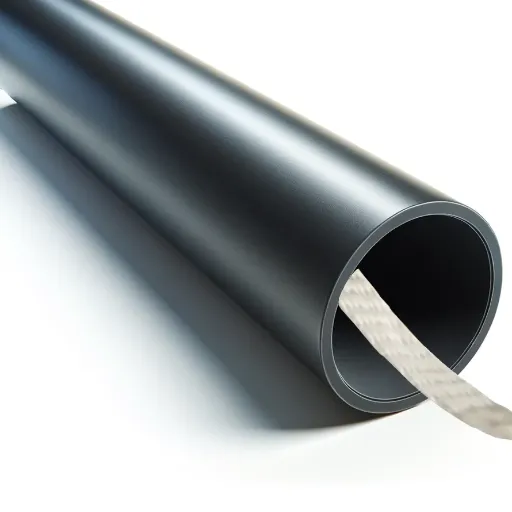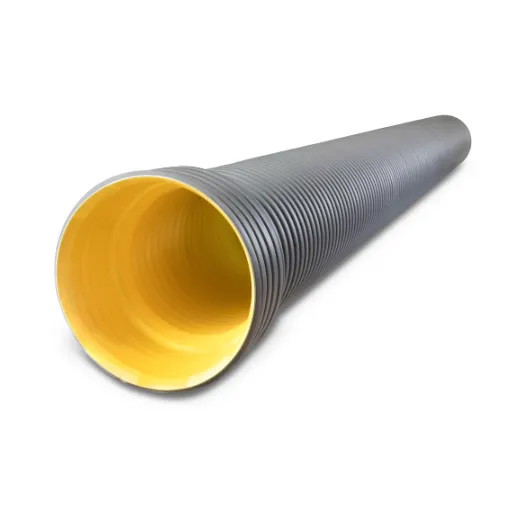High-Density Polyethylene (HDPE) pipes have become a cornerstone in modern piping systems, renowned for their durability, flexibility, and cost-efficiency. When it comes to selecting the right HDPE pipe for specific applications, understanding the Standard Dimension Ratio (SDR) is crucial. SDR 17 pipes, in particular, offer a compelling balance between size, pressure capacity, and versatility, making them a popular choice across a wide range of industries. This article dives deep into the dimensions, pressure ratings, and practical applications of SDR 17 HDPE pipes, equipping you with the technical knowledge necessary to make informed decisions. Whether you’re a seasoned engineer, contractor, or just exploring piping solutions, this guide is designed to clarify the essentials and provide actionable insights.
Overview of SDR 17 HDPE Pipes
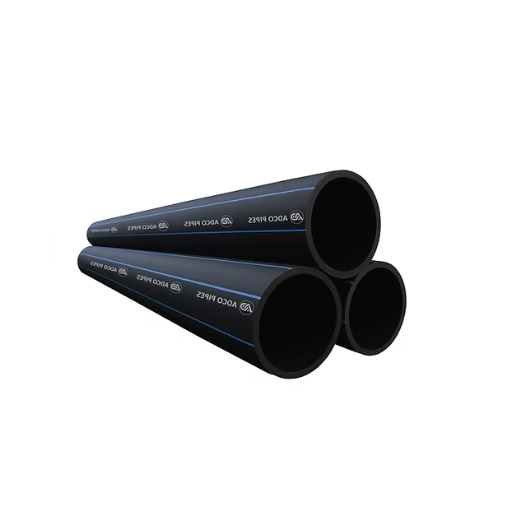
What is SDR 17?
The Standard Dimension Ratio (SDR) of a pipe indicates a ratio relating its outer diameter to the thickness of its wall. Specifically, SDR 17 stands for 17 times the outer diameter of the pipe with respect to its wall thickness. This is perhaps the most crucial manufacturing parameter, as it dictates the pressure capacity and stiffness of the pipe.
Pipes of SDR 17 are designed for a certain pressure rating, which is based on the material properties and pipe dimensions. For HDPE pipes, SDR 17 usually means a pressure rating of about 100 psi or 1.6 MPa, although there might be some variations depending on material grade and temperature conditions. This pressure rating renders SDR 17 pipes perfect for medium-pressure applications, such as water distribution, agricultural irrigation, and certain industrial processes.
SDR 17 pipes meet the balance between strength and economy. With moderate wall thickness, the pipes are lighter and hence easier to install, with handling being much easier. With such moderate wall thickness, responsive strength is maintained under normal working pressure. This explains why they are widely used in systems where performance consistency and economic viability are top priorities.
Key Specifications of SDR 17 HDPE Pipes
SDR 17 HDPE pipes come with the definition of a standardized dimension ratio, in which the wall thickness would be approximately 1/17th of the outside diameter of the pipe. This ratio, in turn, accounts for the pipe’s pressure rating, which is generally rated at 100 PSI under a standard set of operating conditions. Based on its pressure classification, the SDR 17 pipes find applications in water distribution, irrigation systems, and low-pressure industrial pipelines where only moderate stresses need to be managed.
Since the pipes were built out of high-density polyethylene material, the pipes shall offer ultimate corrosion resistance and chemical composition. This capability could make the SDR 17 HDPE pipes highly efficient for conveying liquids, including potable water, non-hazardous wastes, and different fluids that might cause degradation to most other kinds of materials. Besides, the flexibility factor would enable installation over uneven terrain, minimizing the need for joints and thus minimizing the hazards from ground movements and seismic activities.
Another key factor is the durability and life expectancy of these pipes. Under normal operating conditions, SDR 17 HDPE pipes are expected to last anywhere between 50 to 100 years and hence are the cost-effective solutions for long-term infrastructure works. Being lightweight makes these pipes easy to carry over distances, so installation is simplified, which in turn reduces labor and equipment costs. Plus, the fusion jointing system of HDPE pipes assures leak-free joints, thereby guaranteeing the whole system performs without a hitch for a long time and requires very little maintenance, making these pipes technically sound and reliable in many industry fields.
Comparison with SDR 11 and Other SDR Ratings
Poles with SDR 11 have thicker walls and higher pressure ratings-resisting pressure up to 16 bars. Thin, moderately light, and suitable for medium pressure of about 10 bars are SDR 17 pipes. Other categories of SDR include different wall thicknesses with various pressure capacities.
| Key Point | SDR 11 | SDR 17 | Other SDRs |
|---|---|---|---|
| Wall | Thicker | Thinner | Varies |
| Pressure | High (16 bar) | Medium (10 bar) | Lower for higher SDR |
| Weight | Heavy | Light | Varies |
| Cost | Higher | Lower | Varies |
| Use | High-pressure | Medium-pressure | Specific to SDR |
| Material | HDPE, PVC | HDPE, PVC | HDPE, PVC |
| Flexibility | Moderate | High | Varies |
| Applications | Gas, water mains | Irrigation, drainage | Specific to SDR |
Dimensions and Sizes of SDR 17 HDPE Pipes
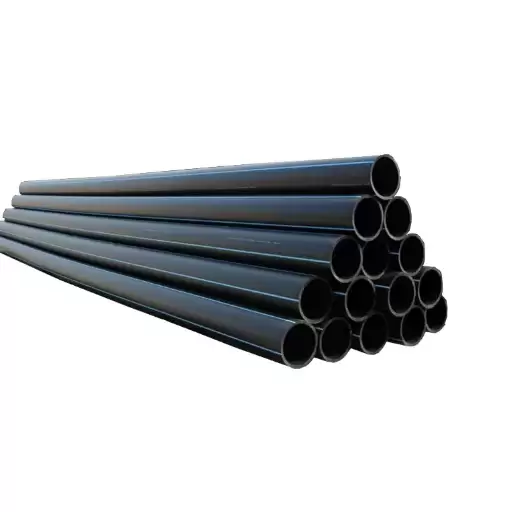
Standard Sizes and Lengths
Produced strictly by its dimensional standards, SDR 17 HDPE pipes perform consistently in various installations. The usual diameters of SDR 17 pipes range anywhere from 1 inch (25 mm) to 63 inches (1600 mm), thus allowing for versatile usage in low and large-scale projects. The walls of the pipes align with their outside diameters under the classification of SDR 17, so they are very much within the balance between flexibility and strength.
In respect of the standard length, 20-foot and 40-foot pipe segments are usual, while custom length manufacturing is possible, depending on the demands of the particular project. For applications that minimize joints, HDPE pipes can be supplied in coils for smaller diameters, typically restricted to 6 inches (160 mm). This choice reduces the number of fusion joints needed and eases transportation and installation. The light-weight build of these pipes makes the whole process of handling even easier without impairing structural reliability.
Such precise sizing and availability through standard lengths symbolize the adaptability of SDR 17 HDPE pipes in keeping with industry standards in conformity with ASTM F714 and ISO 4427, allowing engineers to select the pipe of required dimension as per their hydraulic and mechanical demands.
Wall Thickness Specifications
The wall thickness of the SDR 17 pipe is a crucial determinant through the Standard Dimension Ratio calculation-from the ratio of the pipe’s outer diameter to its wall thickness. For SDR 17 pipes, this ratio is designed to provide the best compromise between flexibility and pressure capacity that serves in many pressure-rated applications. A pipe with an outer diameter of 200 mm, for example, will have a wall thickness of 11.8 mm in conformity with SDR 17.
The specification thus allows for a maximum working pressure of about 100 PSI at 73°F to be applied to the pipe, as set out in the industrial standards of ASTM F714 and ISO 4427. The pressure somewhat varies with temperature and customer application requirements, hence the need to always confirm the correct values on the job design.
Therefore, with respect to hydraulic flow, these pipes ensure uniform thickness, eliminating any turbulence created due to dimension variations during fitting, which can be gasketed. This makes it best suitable in water technologies ranging from water distribution systems and industrial pipeline networks to irrigation networks.
Nominal Pipe Diameters
Nominal Pipe Diameter (NPD) is a standardized pipe diameter used worldwide for sizing and compatibility. Typically, the term refers to the pipe’s outer diameter in the case of metal pipes, whereas the inner diameter is used for the nonmetallic counterparts, depending on industry conventions. Any errors in actual measurements can lead to discrepancies, affecting system integrity and, therefore, performance, as fitting, valve, and component incompatibilities will arise.
The suitable nominal diameter depends on the type of fluid, flow rate, operating pressure, and the intended application of the system. For example, one needs a higher NPD when it carries a higher volume of fluids or gas, while smaller diameters suffice most of the time for accurate flow control or localized distribution. Engineers use standards like ASTM or ISO, which describe use-based benchmarks to assign compatible diameters.
I would say that selecting nominal pipe diameters in line with anticipated load requirements and applicable design codes is highest on the importance list. Making sure of the correct NPD would be an advantage right from the early design stage, thus easing installation, reducing the possibilities of incompatibilities, and adding to the smooth operation and long-term durability of pipeline systems. Strict specifications alongside manufacturers’ consultation are some of the best options for minimizing errors during system implementation.
Pressure Ratings and Applications
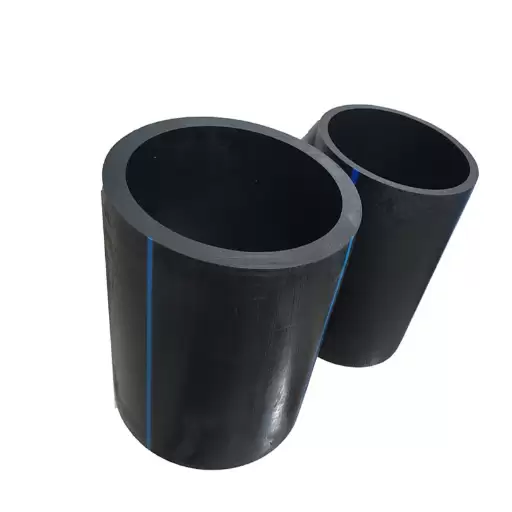
Understanding Pressure Ratings of SDR 17 HDPE Pipes
Pressure rating of SDR 17 HDPE pipe is imparted by the pipe having an SDR, which is the ratio between the pipe’s outside diameter and the wall thickness. Such pipes have about 100 PSI rating at 73°F (23°C), provided they are made of PE4710 resin high-grade material that is often used to make the conventionally acknowledged HDPE pipe today. This rating is most conducive to uses requiring moderate pressure tolerance, such as municipal water supply or agricultural irrigation networks.
One must be able to take into account important performance variables such as temperature de-rating, as HDPE materials decrease in pressure capacity when working at elevated temperatures. An SDR 17 pipe at 140°F (60°C) may have its pressure rating drastically reduced, making it necessary to carefully evaluate and redesign the system to serve high-temperature applications. External loads such as compaction or traffic loads should also be considered at the time of installation, as they directly affect the performance and hence its lifespan.
By understanding these ratings and factors, engineers can design systems optimized for particular operating requirements, thereby assuring that projects from different infrastructure will be safe and reliable for the long term by using industry standards such as ASTM F714 and AWWA C906 during design.
Applications in Water Mains and Industrial Settings
HDPE pipes have been found relevant for diversified applications while contextualized for water mains and industries because of their durability, flexibility, and corrosion resistance. Listed below are the other five major applications of HDPE pipes:
- Potable Water Distribution System: In municipal water supply systems, HDPE pipes are installed to resist scaling, corrosion, and chemical action. The pipes are made of non-toxic material, and thus, they allow the safe transit of drinking water, complying with health and safety standards like NSF/ANSI Standard 61.
- Sewage and Wastewater Systems: Sewage and wastewater transportation suits well for HDPE pipes well because they offer high impact resistance and resist biological growth. They are somewhat flexible and can thus bear lateral movements of the ground resulting from earthquakes, thereby minimizing damage.
- Agricultural Irrigation Systems: They assist in maintaining the water flow in modern agricultural irrigation systems, endure higher-pressure operations, and resist environmental hazards such as UV rays and inclement weather.
- Industrial Effluent Transport: Industries use HDPE pipes for transporting chemical effluents and hazardous wastes. HDPE piping assures durability with high corrosion resistance owing to its chemical inertness.
- Fire Protection Systems: Underground fire protection systems frequently apply HDPE because the pipes can withstand high pressures and the external corrosion that comes with underground services. These systems are commonly combined with advanced sprinkler systems at industrial premises.
Each of the abovementioned uses showcases adaptability allied to the reliability of HDPE in crucial infrastructure systems, which reduces maintenance requirements and adds value to systems’ operational efficiency over time.
Advantages Over Other Pipe Materials
High-Density Polyethylene (HDPE) has several advantages over conventional pipe materials such as steel, PVC, and concrete. Here is a thorough list of five major benefits that characterize its superior performance in a wide array of applications:
- Corrosion Resistance: Unlike steel or concrete pipes that tend to rust or degrade chemically, HDPE pipes are highly resistant to chemical and biological corrosion. This sets HDPE apart as an excellent choice for transferring corrosive materials and for underground pipe systems in wide-ranging soil conditions. For example, studies attest that HDPE pipes last more than 50 years in aggressive field environments without any severe degradation.
- Flexibility and Ductility: Unlike rigid materials such as PVC or concrete, HDPE is highly flexible and ductile. This means that it can absorb stresses induced by soil movements, temperature variations, or earthquakes, without cracking or breaking. Besides this, flexibility offers great ease in installation, especially in uneven terrains, thus making it more desirable in challenging applications.
- Superior Longevity: It can be said that the estimated lifespan of HDPE pipes is around 50-100 years, which is much longer than many competing materials. That is, such an excellent lifespan minimizes the frequency of replacements and repair cycles, hence greatly reducing the Total Cost of Ownership (TCO). For instance, a comparative lifecycle analysis shows that HDPE system maintenance costs may be reduced by 30% compared to the maintenance of PVC pipes.
- Lightweight and Easy Installation: From an installation point of view, HDPE pipes are lightweight when compared to concrete and steel materials. This feature helps to keep down transportation and labor costs during installation. Additionally, fusion welding technology for HDPE allows the creation of seamless joints that are free from leakage, a common to mechanical joints of conventional pipe systems.
- Environmental Sustainability: HDPE is eco-friendly as it is 100% recyclable. Also, the production process entails a much lower carbon footprint as compared with its traditional counterparts, such as concrete or steel. Its high durability further reduces waste generated over its service life, thus satisfying in the long run sustainability goals for infrastructure development.
Such benefits witness the eminent dominance of HDPE piping amongst industries wherein safe, reliable, and efficient piping solutions are required, leading to improved operational efficiency and reduced environmental impact.
Installation Techniques for SDR 17 HDPE Pipes
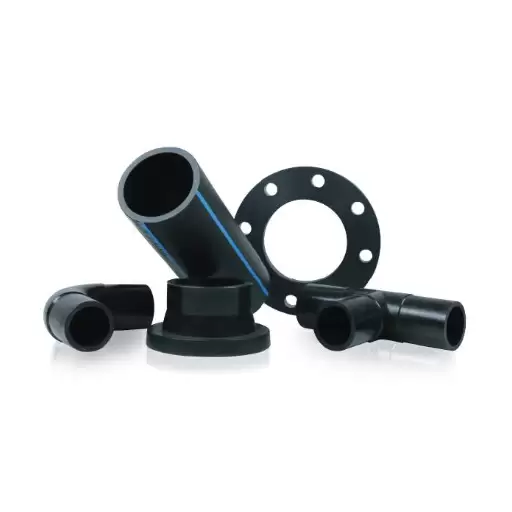
Pipe Fusion Methods
Generally, SDR 17 HDPE pipe installation involves using the procedure of pipe fusion to develop a smooth and leak-proof connection, maintaining the structural integrity of the pipeline in the process. The two commonly used methods of fusion are butt fusion and electrofused.
The so-called Butt Fusion method involves heating the pipe ends by means of heat, pressure, or controlled periods, then pressing them together. The forged joint is a homogeneous one of strength equal to or greater than the pipe itself. The execution of butt fusion requires highly accurate machines, including a butt fusion machine with calibrated heating elements to provide consistent and accurate results. Butt fusion is mainly preferred because of its relatively low cost and very resilient product under conditions requiring long straight pipeline installations.
Electrofusion uses couplings bearing heating elements that are electrically activated to provide a strong, uniform weld between the pipe ends. It finds its best usage for repair works, complex configurations, or some awkward access, as only a small amount of on-site fusion equipment needs to be brought and set up. Also, the method guarantees their joint consistency very closely, thus being the best solution for places demanding high-level safety and quality requirements.
Both methods are subject to strict industry standards, such as ASTM F2620 and ISO 21307, governing the ways of fusion to ensure proper operational reliability and the needed safety protocol. Choosing the right method for the fusion depends greatly on the scope of the project, pipe diameter, and the condition of the application. Important advancements in fusion techniques, such as automated control systems and real-time data logging, have recently improved the capability of fusion in both the accurate application and tracing of construction, thereby further maintaining its position as a modern pipeline.
Using Fusion Machines for Installation
Modern fusion machines have revolutionized the process of pipeline installation by offering the highest standards of accuracy, efficiency, and reliability. These machines capitalize on advanced technologies, with automated controls and built-in data logging systems ensuring accurate thermal and pressure control during the fusion process to avoid joint failure stemming from operator error and to maintain the same bond quality for all fused sections.
With real-time data monitoring, information can be collected for temperature, pressure, and lapse times to ensure that every fusion joint complies with industry standards such as those dictated by ASTM or ISO. These features also make quality assurance more straightforward and ensure regulatory compliance while reducing the documentation burden during audits and inspections.
In addition, GPS-enabled tracking of joint locations and cloud-based data storage are relatively new enhancements, with project managers benefiting from the increased operational efficiency of remotely overseeing field activities. Traceability improvements create easier maintenance or repairs in later phases of the pipeline life. Hence, fusion machine technology is enabled to reduce downtime and material waste, thereby increasing the long-term structural integrity of piping systems.
Best Practices for Fittings and Connections
For precision fittings and connections in piping systems, industry standards must be strictly adhered to. First of all, the fittings should conform to the material and specifications of the pipe for uniformity in strength, durability, and chemical resistance. Any deviation could create weak points, thus undermining the structural integrity of the system. Also, using fittings that have pressure and temperature ratings appropriate for the service ensures that the joint will not fail under operating conditions and that safety will be ensured.
Joint preparation remains one of the most important factors in ensuring weldable joints. The cleaning off of the pipe ends and fittings of any contamination, such as dirt, grease, or debris, is vital because such contamination compromises the welding or bonding process. The use of the correct beveling, facing, and alignment tools will also ensure a good fit and reduce the possibility of failures in applications where the joint will be subjected to high stresses. It is also recommended to follow the manufacturer’s instructions and use tools designed for the pipe material and size, which would naturally improve the quality of the joint.
And last but not least, after the assembly of the piping systems, a thorough inspection and testing of the systems should never be compromised. Hydrostatic or pneumatic pressure tests can be used to check for leaks in the fittings and connections or weaknesses in them. Following these best practices means that I will always be able to secure piping systems that are safe, economical, and capable of lasting the intended life.
Maintenance and Cost Benefits
Best Practices for Maintaining SDR 17 HDPE Pipes
- Inspect for Surface Damage: Drop visual inspections at regular intervals to detect scratching, gouging, or other surface-type damage. An impairment exceeding 10% of the pipe wall thickness can have its performance repercussions and must be immediately fixed or replaced.
- Clean Internal Surfaces: Regularly flush the pipe system with clean water to clear away sediment or debris deposition. Avoid harsher chemicals that might take a toll on the polyethylene material.
- Joint Integrity Monitoring: Confirm whether the electrofusion or butt fusion joints are maintaining proper alignment and look for indicators of potential failures like misalignments or visible cracks, as any joints intersect weaknesses within the piping system.
- Check Operating Parameters: Keep pressure and temperature within the specified range for SDR 17 HDPE pipes. Deviation beyond those limits will cause long-term damage.
- Ultrasonic Testing (UT): For wall thickness evaluation and detection of internal flaws without dismantling the pipe system, apply ultrasonic non-destructive testing techniques.
- Track System Performance via SCADA (Supervisory Control and Data Acquisition): Take advantage of the SCADA system for measuring flow rates, pressure changes, and temperature fluctuations under various conditions for timely actions related to maintenance.
- Evaluate Environmental Exposure: Inspect outdoor pipes for the effects of UV degradation or thermal expansion. Protect the pipes with UV-resistant coatings or insulation wherever necessary to enhance service life.
If uninterrupted, these maintenance practices assure the reliable performance and sustained structural integrity of SDR 17 HDPE pipes over long periods, thus limiting the chances of untimely downtime and expense.
Comparative Analysis with Other Pipe Materials
Resistance to corrosion, degradation from pollution, and flexibility are three attributes that the HDPE pipe excels in comparison with PVC and metal. Of the two, PVC has a much higher tensile strength price, while metals are great conductors of heat but get corroded.
|
Key Point |
HDPE |
PVC |
Metal |
|---|---|---|---|
|
Flexibility |
High |
Moderate |
Low |
|
Corrosion |
Resistant |
Moderate |
Prone |
|
Durability |
High |
Moderate |
Moderate |
|
Cost |
Moderate |
Low |
High |
|
Thermal |
Insulating |
Moderate |
Conductive |
|
Joining |
Heat fusion |
Glue/gasket |
Welding |
|
Lifespan |
50-100 years |
50-70 years |
Varies |
|
Applications |
Gas, water, sewer |
Irrigation, drains |
Heat, pressure |
Cost-Effectiveness in Long-Term Use
Investment in SDR 17 HDPE pipes renders substantial cost savings throughout their service life. Being durable and resisting corrosion, they are lightweight and easy to install or repair, minimizing frequent replacements and labor costs. HDPE pipes incur fewer hits from degradation mechanisms than their traditional pipe counterparts, such as exposure to stressful chemicals or seismic waves, thus lowering repair occasions and cost.
Also, this very low thermal conductivity of HDPE makes it an energy-efficient system, especially in markets handling temperature-sensitive materials, wherein it works to reduce heat loss or gain. Moreover, these pipes require less energy during manufacture and transportation due to their lightweight, thereby imposing a lesser environmental cost and operational cost over their working lifetime.
Economically, HDPE piping systems have been established for over 50 years, thereby presenting enormous gains realized returns. The above sustainability angle contradicts the traditional rancor of the investment-drawing angle found on HDPE as being more costly compared to PVC, concrete, or steel. In addition to their consideration of system maintenance and operating costs, when correctly installed and maintained, SDR 17 HDPE pipes offer long-term effectiveness for both infrastructure resilience and financial sustainability, which makes it a preferred choice in various industries.
References
Frequently Asked Questions (FAQ)
Q: What are the dimensions of SDR 17 HDPE pipe?
A: The SDR 17 HDPE pipe dimensions vary depending on the nominal size. For example, a typical SDR 17 pipe in 8-inch diameter has an outer diameter (OD) of approximately 8.625 inches and a wall thickness of around 0.5 inches. The dimensions ensure that the pipe can handle low-pressure applications effectively.
Q: How does SDR 17 compare to SDR 11?
A: SDR 17 has a higher ratio of the pipe’s diameter to the wall thickness compared to SDR 11, making SDR 11 thicker and more suitable for higher pressure applications. While SDR 17 is used for lower-pressure applications, such as irrigation and drainage, SDR 11 is often recommended for industrial applications where pressure requirements are more demanding.
Q: What are the applications of SDR 17 HDPE pipe?
A: SDR 17 HDPE pipes are highly versatile and are used in various applications, including water applications, drainage systems, geothermal systems, and fertilizer transfer. Their robust construction and resistance to agricultural chemicals make them an outstanding choice for chemical transport.
Q: What is the pressure rating for SDR 17 HDPE pipe?
A: The SDR 17 HDPE pipe typically has a pressure rating of up to 200 psi, making it suitable for low-pressure water distribution and other applications where high-density polyethylene pipe is necessary.
Q: Can SDR 17 HDPE pipe be used for industrial and municipal applications?
A: Yes, SDR 17 HDPE pipe is commonly used in both industrial and municipal applications. Its durability, UV resistance, and ability to resist various chemicals make it ideal for projects that require reliable and long-lasting piping solutions.
Q: What thickness of pipe is used for SDR 17 applications?
A: The thickness of the pipe for SDR 17 applications varies based on the outer diameter. For instance, an 8-inch SDR 17 pipe has a wall thickness of approximately 0.5 inches. This thickness is designed to maintain integrity under specified pressure conditions.
Q: Are SDR 17 HDPE pipes resistant to agricultural chemicals?
A: Yes, SDR 17 HDPE pipes are resistant to many agricultural chemicals, which makes them suitable for applications that involve transporting fertilizers and other chemicals used in agricultural practices.
Q: What is the significance of OD in SDR 17 HDPE pipe?
A: The outer diameter (OD) of SDR 17 HDPE pipe is crucial because it determines the pipe’s compatibility with fittings and other components in a piping system. A consistent OD allows for easier installation and connection to various systems in both industrial and municipal applications.



